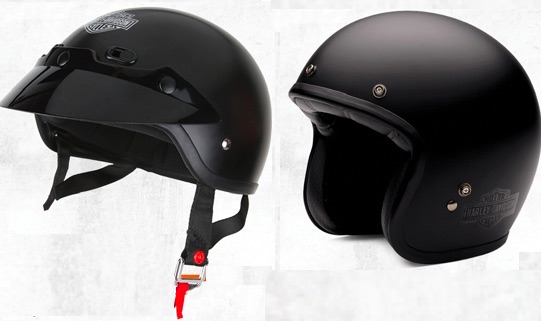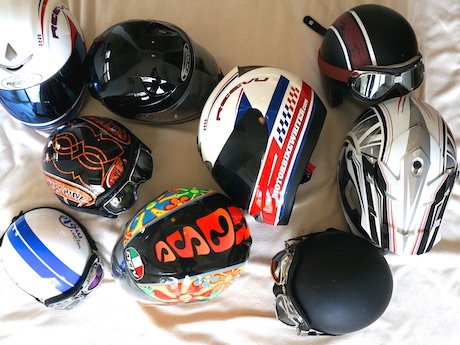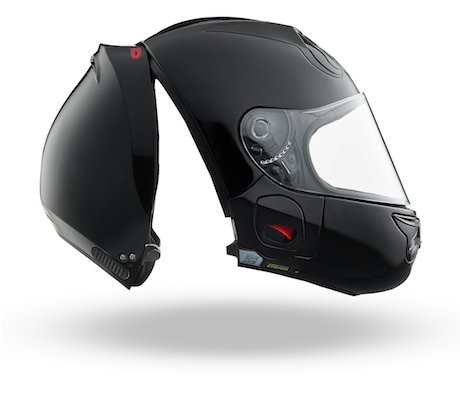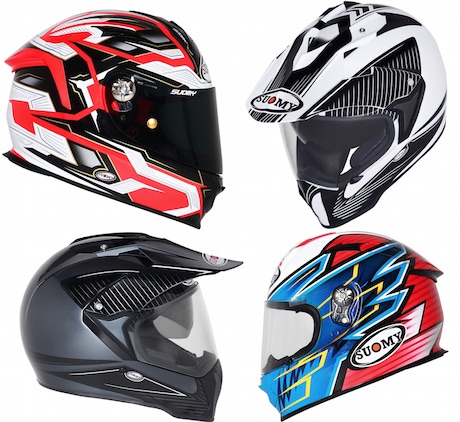A helmet forum in Sydney has decided that the Australian standard for helmets is still relevant – at least for now – but requires revision to make it more explicit and not open to interpretation.
Despite all Australian states now allowing European-standard UNECE22.05 helmets, it was pointed out that there are helmets currently being sold here that would not pass UNECE, including shorty and some ATV helmets.
The AS/NZS 1698 Protective Helmets for Vehicle Users forum was hosted by Standards Australia to seek opinions from stakeholders, says Standards Australia motorcycle spokeswoman Alison Scotland.
She says they initiated the original forum in January 2015 to discuss the inconsistency of application of regulations across the nation after Queensland allowed UNECE helmets.
Since then, the Australian Consumer and Competition Council has changed the rules to allow UNECE 22.05 helmets to be legally sold and all states and territories have amended road rules to allow their use.
While some at the forum have said the Australian standard is no longer relevant to many riders, importers and the racing community, it was pointed out that here were still helmets that would not be sold in Australia if the AS/NZS was axed.
They include shorty and ATVs helmets, believed to represent about 15% of the market.

It was also noted that importers have changed to the UNECE standard and the commercial impact would probably phase out AS/NZS, but in the meantime it should be amended.
A Department of Infrastructure spokesman said “we could do without it” because we don’t have any Australian helmet manufacturers, but if it is retained, it should be revised to be more explicit and not open to interpretation.
Recommendations for an updated standard include taking into account helmet attachments and emerging technologies such as Bluetooth, head-up display and the chin-strapless Vozz helmet.
It was also suggested the standards committee meets more regularly and updates the standard more frequently.
Despite the forum then going into discussion on the future standard, it was believed it would be an interim measure and eventually become obsolete and be withdrawn.
WHO WAS THERE?
The forum was attended by relevant government departments, university researchers, rider representatives, motorcycle helmet crash testers and certifiers, motorcycle industry representatives, road safety experts and regulators, motorcycle helmet importers and distributors and several representatives of Australian-designed Vozz Helmets. Police were not present as they were at the first forum.

(Motorbike Writer joined several participants on a phone link, but it was difficult to hear all comments and difficult to always identify who was speaking.)
SAFETY
The main issue debated was the safety of the two competing standards.
A spokesman for compliance certifier SAI Global obviously wanted to keep the current standard saying it was an “eminent standard” that was “regarded as a high level standard for riders”.
He said all Australian-certified helmets would pass the European standard, but not all UNECE 22.05 helmets would always pass Australian standards.
(The shorty and ATV helmet exceptions were mentioned later.)
An importer pointed out that the fit of a Euro helmet is different to Australia. “They have a thinner face and don’t have the same cutout for the ears.”
Vozz Helmets managing director Mark Bryant says AS/NZS penetration test requirements make helmets heavier which can causes neck injuries in a crash.
He says the ECE test is far superior. He says the Australian standard is out of date from a manufacturer’s point of view.
His helmet has been certified to AS/NZS, ECE and DOT and they have to make changes for each market.
He also pointed out that the AS/NZS did not account for the fact his helmet does not have a chin strap, saying the standard was out of date.
“When new technology comes out it is up to certifiers to look at a way to test, otherwise we’d still be riding around in a horse and cart,” he said.

BATCH TESTING
SAI Global also questioned the UNECE batch testing of helmets and quality assurance testing of laboratories, saying it was unacceptable.
An importer said the Australian standard would probably die, but he didn’t have confidence in Euro batch testing.
He said he was worried about safety recalls and the cost to importers.
Alison said the Australian Government could go to the UN committee and put their concerns about batch testing “on the table”.
It was also pointed out that not all European countries have problems with batch testing and it was suggested we only allow those countries that comply to export to Australia, but that would introduce an extra layer of complexity in the law and further confuse riders.
RIDERS
Several rider group representatives were asked what riders want.
Australian Motorcycle Council helmet expert Guy Stanford said they wanted a wide choice of safe and cheaper helmets.
“Our heads are the same as people in Europe,” he said. He also pointed out that while Australians rode on more dirt roads, the bikes and riding conditions placed largely the same requirements on helmets.
Another rider group representative said riders wanted access to the best helmets in the world.
He said the AS/NZS penetration test led to heavier helmets and riders wanted lighter helmets which placed less strain on the neck and caused less fatigue for enduro riders.
He said riders are not getting that choice because some manufacturers find it too expensive to certify for such a small market.
An importer disputed the comments saying “98% of everything that is safe is imported”.
He said Schuberth helmets were not available in Australia because the distributor was difficult to deal with. He said Shoei, Arai and Bell bring in all their helmets, most with only minor changes.
He also disputed the cost of helmets in Australia, saying internet buying had forced down prices.
“We are among the cheapest in the world.”
The forum cannot make legislation changes, but only advise relevant departments, legislators and regulators.
However, the previous forum showed that change is possible.
(The forum discussion about the revised standard is ongoing. It will discuss the form of the revised standard and helmet use issues, such as attaching helmet cameras and tinted visors, including internal shades. Findings will be posted later.)


